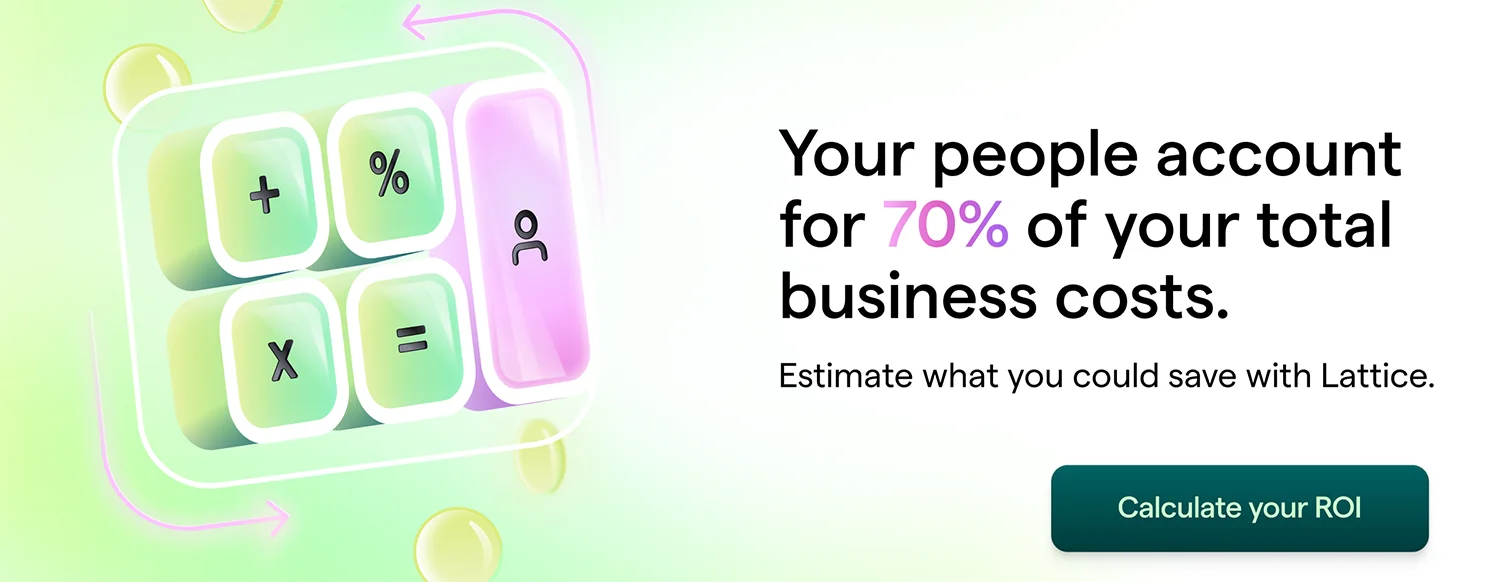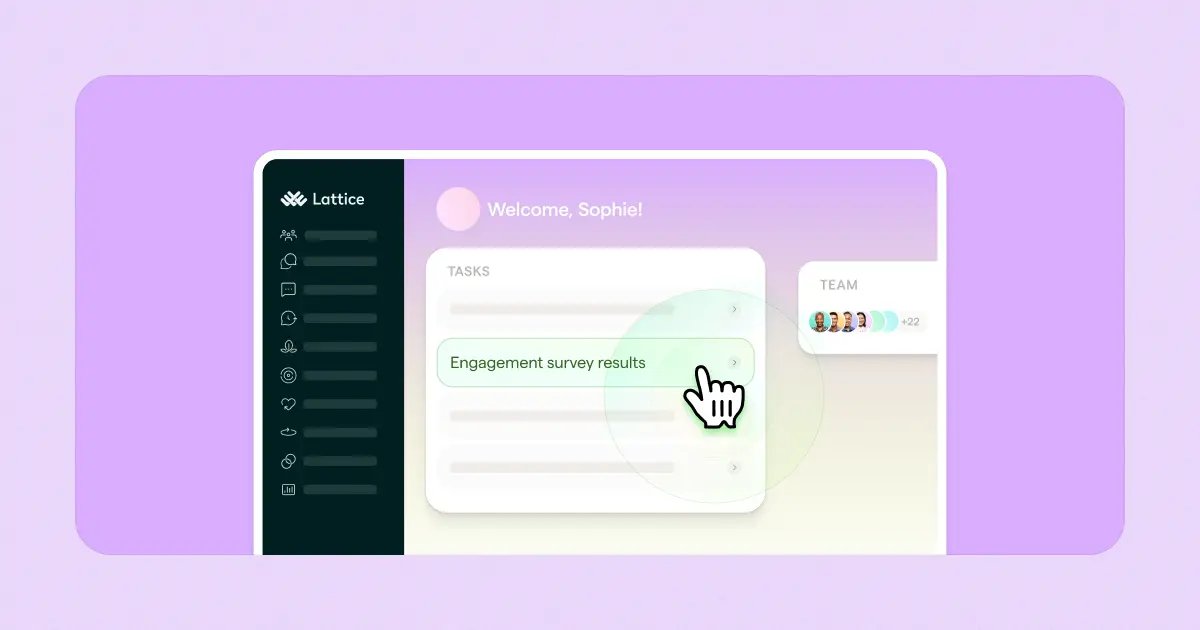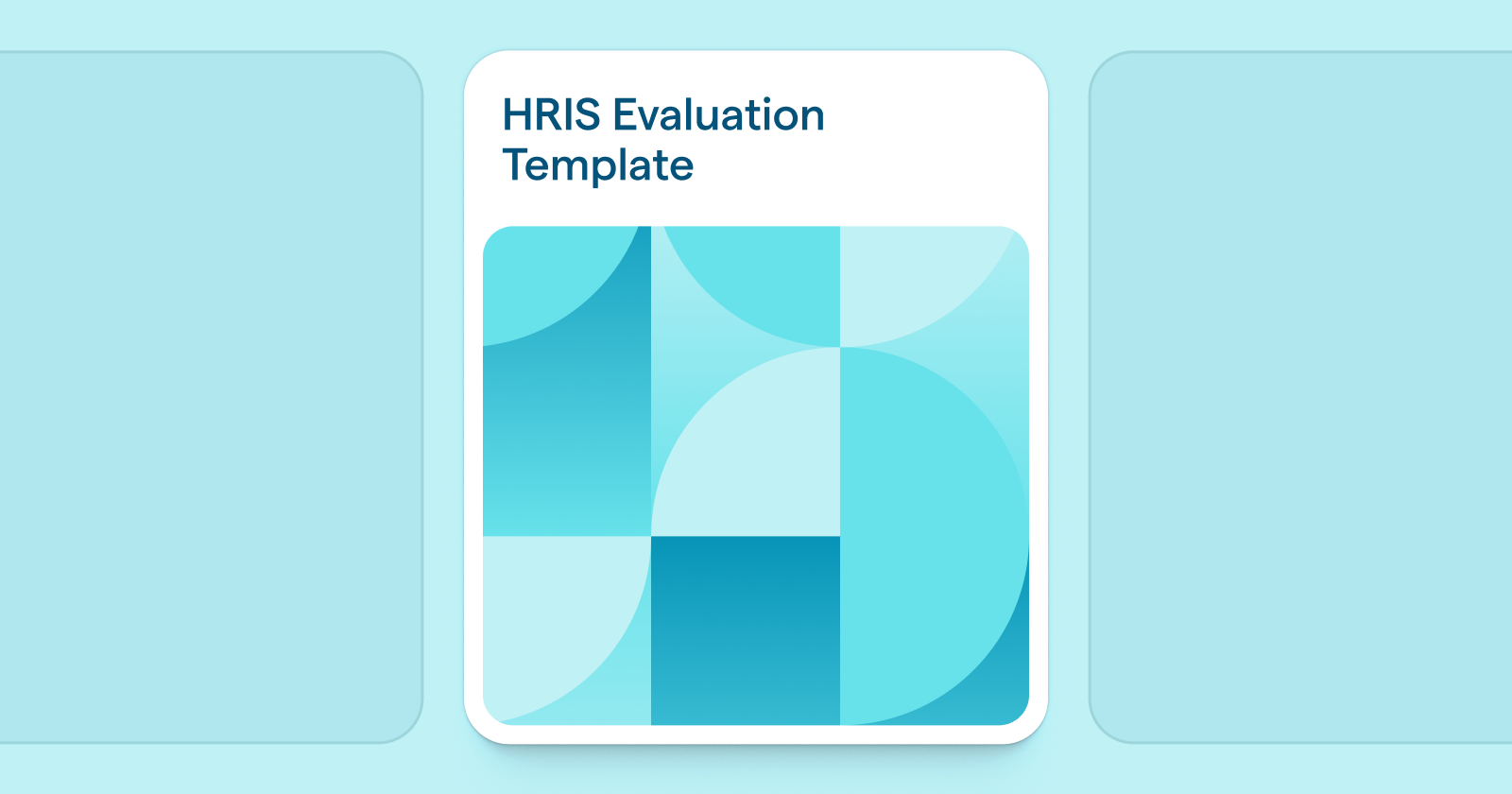For many companies, there comes a time when manual HR processes no longer suffice. Whether you’re growing quickly, expanding to new locations, or simply spending too much time on repetitive administrative tasks, investing in HR software can help you standardize, automate, and scale your people operations. These platforms centralize employee data, reduce compliance risk, streamline hiring and onboarding, and free up your HR team to focus on more strategic initiatives.
But starting your search can feel overwhelming. From HRIS to HRMS to HCM, the sea of acronyms alone is enough to make your head spin. Not all solutions are created equal, and more importantly, not all of them are right for your business.
This guide will help your HR department cut through the noise. We’ll walk through the most common types of HR software, how to evaluate your organization’s needs, and what features to look for in a platform that can grow with you.
{{rich-takeaway}}
Different Types of HR Software
Before diving into the software selection process, it’s important to understand the different types of HR platforms available. HR vendors often use terms interchangeably, which can make it hard to compare solutions or know exactly what you’re getting. Having clear, consistent definitions will help you better evaluate your options and focus your search on the systems that meet your specific needs.
Here are three of the most common types of HR software, defined.
Human Resource Information System (HRIS)
An HRIS is a digital platform that centralizes employee data, automates HR processes, and supports core HR functions like data management, payroll, time and attendance tracking, and benefits administration. It’s a solid choice for mid-sized and small businesses looking to streamline their HR operations and automate basic workflows.
Top HRIS companies:
- Lattice HRIS
- HiBob
- BambooHR
Interested in learning more about HRISs? Explore The Ultimate HRIS Evaluation Template for HR Teams for a deeper dive into the solution and its offerings, or check out our list of the 10 best HRIS providers.
Human Resource Management System (HRMS)
An HRMS offers all the core capabilities of an HRIS — plus additional features that support the full employee lifecycle. This often includes recruiting and applicant tracking, performance management, and workforce analytics. These systems are typically geared toward mid-sized to large organizations looking to run both HR administration and talent management in a single platform.
Top HRMS companies:
- Gusto
- Rippling
- Deel
Human Capital Management (HCM)
Lastly, we have HCM, the most comprehensive of the three solutions. It includes all the features of an HRIS and HRMS, but it goes a step further by supporting strategic workforce planning and management. HCM platforms often include tools for advanced analytics, succession planning, compensation planning, learning and development, and global workforce management. These solutions are designed for larger, more complex enterprise organizations that want to align HR strategy with long-term business goals.
Top HCM companies:
- Workday
- ADP
- Dayforce
13 Core Features of HR Software (and the Problems They Solve)
Now that you’re familiar with different types of HR technology solutions, it’s time to review the key features these solutions offer. Below, we’ll discuss these features, the problems they solve, and the value they can give your business.
1. Employee Records and Document Management
Managing employee records is one of the most common reasons companies invest in HR software. As your workforce grows, keeping documents secure, organized, and accessible becomes increasingly complex, and relying on physical filing cabinets or scattered digital folders can get messy quickly.
HR software centralizes employee records in one secure, cloud-based system. From Forms I-9 and W-2 to offer letters and performance reviews, you can easily store, search, and update critical documents at any time. Access controls and audit trails reduce the risk of mishandled information and support compliance with data privacy laws, making it a no-brainer to replace your paper files and siloed systems with simplified document management.
2. Benefits Management
Handling open enrollment without software backing you up can lead to duplicate data entry, inaccurate payroll deductions, and a flood of employee questions. Instead, imagine open enrollment that walks employees through their plan options step by step, reducing confusion and saving you from endless questions and manual follow-ups.
HR software helps you manage employee benefits more accurately and efficiently, whether that’s facilitating open enrollment, configuring benefit plans, or providing usage insights. Plus, with all employee information centralized, payroll deductions stay accurate through seamless data syncing. And when employees update info that triggers a qualifying life event, they’re automatically prompted to review and update their benefit elections.
3. Payroll Management
Running payroll manually or across disconnected systems can cause calculation errors, delayed payments, compliance issues, and data security risks. Payroll software providers automate payroll processing to reduce errors, simplify tax management, and ensure your employees receive accurate and timely payments, every time. With an all-in-one payroll, HR, benefits, and time data solution, you’ll always have up-to-date information on work hours, withholdings, and deductions — helping you deliver timely deposits and stay compliant with changing regulations.
Check out this story to learn how Lattice saved 240 hours on payroll processing by switching to Lattice Payroll this year.
{{rich-highlight-2}}
4. Time and Attendance Tracking
Without automated tracking, missed punches and inaccurate hours can become common occurrences, leading to compliance challenges and frustrated employees. HR software streamlines time and attendance tracking, automates PTO and overtime calculations, reduces timesheet errors, and helps you stay compliant with labor laws, all while giving employees clarity into their hours and schedules.
Plus, most HR technology solutions include an employee self-service portal that lets employees view schedules, clock in and out via mobile devices, and even swap shifts with colleagues — reducing the administrative workload for HR and managers while still ensuring proper shift coverage.
5. Scheduling
To keep your business running smoothly, you need the right people in the right place at the right time. Manual scheduling is not only time-consuming, but it can also result in inconsistent, unfair, or noncompliant shifts. HR tech solutions simplify scheduling by matching employee availability, skills, and certifications to shift requirements. It helps you stay compliant with labor laws, reduce overtime costs, and distribute shifts more fairly, so no one gets stuck working every holiday or weekend.
6. Compensation Management
Managing employee compensation in spreadsheets isn’t just inefficient, it’s also a security risk. HR software centralizes pay data in a secure system, ensuring only the right people have access. These tools also make it easier to plan, approve, and administer raises, bonuses, and pay adjustments while maintaining internal equity and compliance. With built-in analytics and benchmarking, you can make more informed compensation decisions that support employee retention and business growth.
7. Recruitment
As your business grows, managing the hiring process manually becomes increasingly inefficient. HR software can help you keep track of applicants, manage open job postings, and automate time-consuming tasks like interview scheduling and candidate communication. This frees up your recruiting team to focus on what matters most: finding the right talent. Plus, built-in analytics reveal top-performing sourcing channels, highlight hiring bottlenecks, and help you create a more efficient and equitable candidate experience.
8. Performance Management
Performance reviews are essential, but they can be a major time drain for both managers and employees. Writing self-evaluations and peer reviews, recalling examples from the entire review period, holding performance conversations, and discussing development opportunities all take significant time and coordination. And, when those are rushed or done poorly, your employees are the ones who miss out most.
Performance management features streamline the review process and keep everything organized. Using an HR platform like Lattice with tools for one-on-ones, goal tracking, feedback, and recognition in one platform, managers can more easily evaluate performance and support their teams. Additional tools like 360-degree reviews and calibration also help ensure reviews are fair, consistent, and actionable, so the time invested is truly worthwhile.
{{rich-highlight-1}}
9. Feedback
Feedback is essential for employee growth and productivity, but it’s often hard to know whether it’s actionable or delivered consistently. HR software improves both feedback visibility and quality by enabling employees to request feedback from managers and peers at any time of year, not just during annual reviews. This gives employees timely, specific input they can apply immediately to improve continuously. Often, by investing in feedback tools, you formalize the practice and make it a core part of your culture, encouraging ongoing development and more engaged teams.
10. Employee Engagement
Engagement doesn’t just happen by accident — it requires intentional, ongoing effort informed by employee feedback. But without the right tools, feedback often gets lost, patterns are missed, and opportunities to improve your culture slip through the cracks. That’s where HR software can help.
Employee engagement features help you design and distribute surveys, gather candid feedback, and analyze the results. This allows you to identify areas for improvement and take targeted action that enhances employee experience, boosts productivity, and supports retention. Plus, benchmark data lets you compare your results against industry standards to better understand your position and prioritize initiatives.
11. Compliance
As your business scales to new cities, states, and even countries, compliance gets more complex. HR software helps you stay ahead of changing regulations, track deadlines, and automate tasks like document management and reporting, reducing risk and keeping your company audit-ready.
12. Learning and Development
Without a structured system, training often becomes inconsistent, hard to track, and difficult to scale, especially as your team grows. HR software helps centralize and automate learning programs, making it easier to assign, track, and report on employee development. Whether it's compliance training or leadership development, you can ensure employees are building the right skills and progressing in their roles.
13. HR Analytics
HR systems centralize your people data, giving you a clear, real-time view of your entire workforce. With customizable dashboards and metrics reports, you can spot trends, surface issues, and make more informed decisions quickly.
Additional HR Software Features That Add Value
Beyond core HR functionality, many platforms offer additional features that — while not essential for performing day-to-day HR tasks — can deliver meaningful value to your organization. The impacts of these nice-to-have HR tools often compound over time, improving efficiency, employee experience, and strategic decision-making.
Here are a few features to look out for:
- Artificial intelligence (AI) capabilities and predictive insights: AI can analyze large volumes of HR data in seconds — identifying patterns, flagging potential issues, and recommending proactive actions before problems escalate. These capabilities surface real-time insights that help you make smarter, faster decisions across everything from retention to workforce planning.
- Employee self-service and mobile applications: Empower employees to update personal info, request time off, or access pay stubs and feedback — anytime, anywhere. These tools help reduce your team’s administrative workload while also improving employee satisfaction.
- Recognition: Peer-to-peer recognition tools can help your organization build a culture of appreciation by enabling employees to celebrate their colleagues’ big and small wins.
- Onboarding: Scale your team faster with structured onboarding flows that get new hires up to speed more efficiently.
- Offboarding: Offboarding tools help protect company data and ensure a smooth transition when employees leave.
- Scalability: Implementing new software takes time, money, and resources, so it’s important to choose a system built to grow with you. Look for a platform that can scale as your business evolves — whether that’s adding new modules, supporting more users, or adapting to more complex workflows over time — so you don’t have to repeat the software search in a few years.
- Integrations: The best HR software is the one that fits your business and works seamlessly with the tools you already use. When your systems can share data, you unlock deeper people insights and gain a more complete view of your workforce. Look for solutions that integrate easily with your existing tech stack to maximize the value of your people programs.
- Advanced workflow automation: Streamline complex processes like approvals, document routing, and task handoffs.
7 Steps to Choose the Right HR Software for Your Business
If you’re itching to kick off your HR software search, we’re here to help. Follow these seven steps to find the perfect HR software solution for your needs and budget.
1. Evaluate your needs.
You’ve probably already talked informally about needing new HR software, but kicking off the project with a formal discussion helps align your team and set clear expectations. Use this time to clarify goals, set deadlines, and define what tools and features you need — both now and as your organization grows. This ensures everyone is informed and aligned as you start your search.
2. Create your feature wish list.
Based on that discussion, outline your must-have features and nice-to-haves. Your non-negotiables will guide your search and help you quickly rule out tools that don’t meet your core requirements, while your nice-to-haves can help tip the scales when comparing your top contenders.
3. Decide on your budget.
To be an informed buyer, start by understanding your full budget and available resources. Look beyond upfront costs to factor in any recurring fees, training and support costs, ongoing maintenance expenses, and any potential hidden pricing and fees so you aren’t caught off guard when your first bill lands.
{{rich-highlight-3}}
4. Create a shortlist.
With your feature wish list and budget in hand, it’s time to explore your options. Check review sites like G2, tap into your network for recommendations, or start with a simple Google search. As you evaluate providers, pay close attention to features, user experience, and customer support to build a shortlist of your top contenders.
5. Involve stakeholders.
HR software affects more than just the HR team — it touches every employee in your organization. To make the right choice, form a small task force of cross-functional stakeholders to weigh in. Include voices from payroll, recruiting, IT or engineering, and someone focused on employee experience. Their input helps ensure you choose a solution that’s both practical and aligned with your broader business needs.
6. Request demos and proposals.
Once you’ve narrowed it down to a few standout solutions (ideally two to three), it’s time to see them in action. Request demos and invite your stakeholder task force to join, as this is their chance to ask questions and evaluate the tools firsthand. Then, compare the strengths, weaknesses, and costs of each option to make your final decision.
If you’re torn between options, reach out to your network to see if anyone has firsthand experience with the platforms you’re considering. You can also ask the sales rep to connect you with a current customer in your industry so you can speak directly with someone who uses the software and learn their thoughts on ease of use, as well as what they like and dislike about the vendor.
7. Make your choice.
Once you’ve identified a winner, request a contract and sign on the dotted line. Congrats, you’ve chosen the best HR software for your business. Now it’s time to shift your focus toward a smooth and successful implementation.
How the Right HR Software Can Transform Your Company
HR software isn’t just a tech investment — it’s also a culture-shaping tool. The right platform signals to your people that you’re serious about supporting their growth, recognizing their impact, and creating a transparent, high-performing workplace. From continuous feedback to performance tracking, HR software provides the structure needed to build a culture of accountability, engagement, and development.
Here’s how the right solution can drive real change:
- Standardization: Software can help you create consistent processes across performance reviews, employee onboarding, learning and development, and more, so every employee has a fair and uniform experience.
- Automation and AI: Save time on repetitive tasks, reduce manual errors, and unlock insights faster by automating common workflows and using AI to help uncover trends, flag areas of concern, and offer predictive insights for smarter decision-making.
- Growth for your people and business: When your people grow, your company grows. HR software helps track employee progress, support development plans, and invest in succession planning — aligning individual growth with business outcomes to build the workforce you need for tomorrow.
And the ROI? Investing in HR software can reduce turnover, increase productivity, improve compliance, and free up time for more strategic HR initiatives. In other words, the right software pays for itself — and then some.

Improve and standardize HR processes with Lattice.
On the hunt for a new HRIS? Your search ends here. Lattice HRIS helps you streamline core HR operations in one secure, easy-to-use system.
- Store employee data securely. Say goodbye to scattered spreadsheets and stuffed filing cabinets. Keep all your important records organized, secure, and compliant in one centralized system.
- Onboard new hires quickly. Automate the busywork and give every new hire a smooth, welcoming experience that sets them up for success from the start.
- Reduce manual tasks for the HR team. Save your department from the manual monotony with employee self-service tools and automated workflows.
- Gain more insight into your workforce. Unlock real-time visibility into headcount, org structure, performance and engagement data, and more, so you can make data-driven decisions around how to support and grow your team.
- Pay your employees. Manage pay, people, and performance in one place so payday is accurate, timely, and stress-free.
- Grow your business. Whether you're building out your HR function or scaling to new heights, Lattice grows with you. Start with HRIS, then add tools for performance, engagement, goals, and more as needed.
See how Lattice HRIS can streamline your HR operations for yourself. Request a free demo today and discover a system that admins, execs, HR, and employees all love to use.

🔑 Unlock a free tour of Lattice.
Deciding on an HR platform is hard. That's why we've made evaluating Lattice easy — whether it's our talent tools or HRIS. Check out our Tours Page and choose your adventure.
Key Takeaways:
- While HRIS, HRMS, and HCM are often used interchangeably, they each refer to different types of HR software with distinct purposes and feature sets.
- List your must-have and nice-to-have features to guide you through the evaluation process and help you find solutions that best fit your needs.
- HR software is an investment that can pay for itself through process standardization, automation, AI, and its ability to scale alongside your organization.










